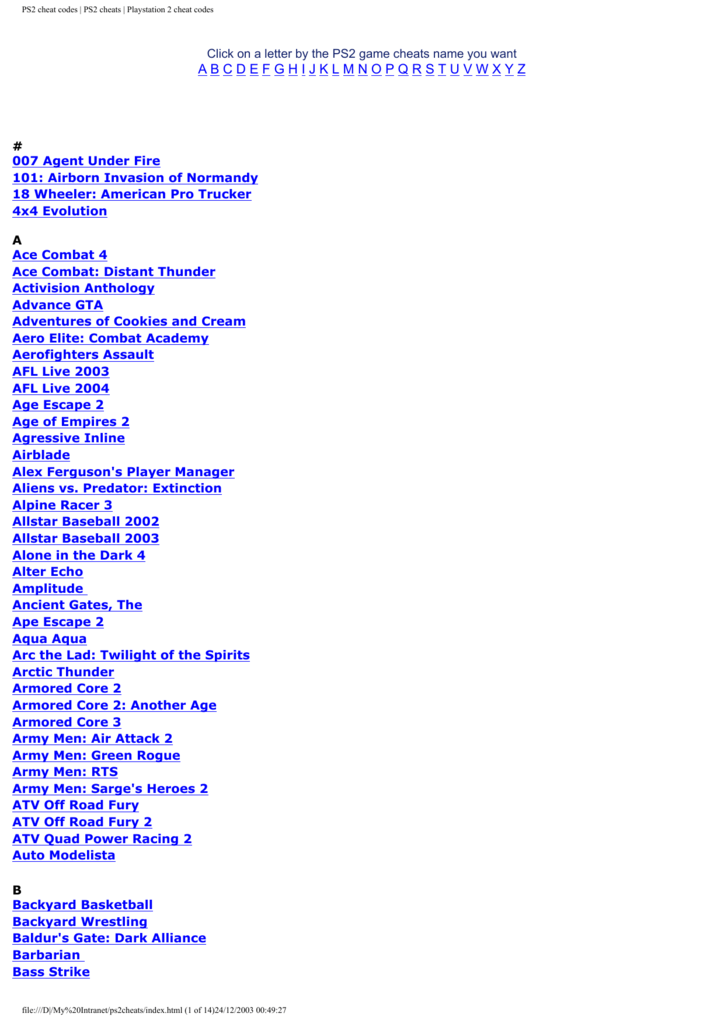
Ty Tasmanian Tiger Pcsx2 Setting
Anonymous rates this game: 5/5 The first in the Ty the Tasmanian Tiger series, this game really gives Krome Studios a good impression. This game, like all in the Ty series, is reminiscent of the Jak and Daxter franchise, and this game does seem similar to the Jak and Daxter: The Precursor Legacy. However, Krome Studios have hidden it well with great gameplay (albeit a slightly repetitive format) and definitive characters. Boss Cass, wanting to take over the fictional Southern Rivers region of Australia, tries to send all warm blooded creatures to The Dreaming, but his plans are cut short when a Thylacine (Ty's father) throws his boomerang to remove the portal's power supply, the mystic talismans, spreading the talismans throughout the region and closing the portal. Desperate to get his family back, Ty the Tasmanian Tiger sets off with the aid of his other remaining friends, including a Tasmanian Devil, a Koala, a Cockatoo, two Platipi, a Dingo and many more. However, it won't be easy as Boss Cass, wanting to complete his plans, also sets off for the talismans. Ty the Tasmanian Tiger has some great humor, and the stereotypical Australian setting is huegly enjoyable.
The lost tower sub indo. Fast-paced, light-hearted and humorous character action game; Ty can run, jump, swim and glide; More than 50 characters based on real-life indigenous. Overview Ty the Tasmanian Tiger 2: Bush Rescue expands on the game play of the first game, but features new elements, such as driving sequences, mech battles, and an expanded world. In Ty 2, Ty must fight Boss Cass once again to save the Australian outback.
Find sources: – ( January 2016) () () Hashim Nadeem(: ھاشم ندیم) is a - novelist, drama writer, poet and fiction writer. Abdullah by hashim nadeem part 3 pdf.
So, ready your boomerangs, mate, and get those talismans!
Introduction If you’ve tried your hand at PS2 emulation with PCSX2 for any length of time, you’ll know that it’s an impressive but thoroughly imperfect emulator that needs a guiding hand more than most. There’s really no one-size-fits-all setting solution when it comes to PCSX2 configuration (other than setting it to software mode and leaving it there, and even then you’ll still run into some issues, just much less frequently) which means that you really need to create configurations on a per-game basis to get the most out of it. This is often a slow, tedious, and incredibly time-consuming process of testing, making changes, reading wiki and forum posts, testing, making more changes, and then testing some more. In some cases, it’ll never be perfect, regardless of settings used but with some adjustments you can get it “pretty close”.
Some cases are nigh on perfect and others are a broken mess with any setting (even software, in a few cases). There are a significant number of one-off fixes that are often necessary in games, from special hacks, to fixes like running all FMVs in software mode, to things like skipdraw for disabling buggy post-processing effects and TC offsets to fix sprite alignment issues - all kinds of things that are needed to offset various visual bugs brought on by upscaling. It’s just the nature of the thing. I’ve been using PCSX2 for a while now - since version 1.2.1 (2014). My Launchbox library had been a mishmash collection of configs for versions 1.2.1, 1.3.1, and 1.4.0 so several weeks ago I decided to finally break down and go through the process of updating all of these to 1.5.0 and then try to add more once that was complete.
The thought occurred to me though, that if I was going to go to the trouble of doing this, I might as well share them here for others to use as well. That presented a question, however, as to how best to distribute them.

PCSX2 is a bit more complicated when it comes to creating and using custom configs - you have to duplicate not one, but several.ini files that contain various settings that PCSX2 will use, and then direct these specific.inis to PCSX2 via command-line (--cfgpath “[path to the config]”). User created a great plugin for Launchbox called that helps automate the configuration creation process by duplicating sections of your current.inis into a new folder named after the game title, then injects the appropriate command-line parameters into that game’s Launchbox library entry. As an added bonus, it can even create independent memory cards for each game. I thought this might be a way to at least help simplify the process for people so they could more easily use the configs, so I contacted him about it about a week ago to get his thoughts on it. To my surprise, not only was he willing to help me in my attempt to streamline the process for people, he offered to come up with a way to incorporate the configs into the plugin and allow users to download and apply them directly from within Launchbox.